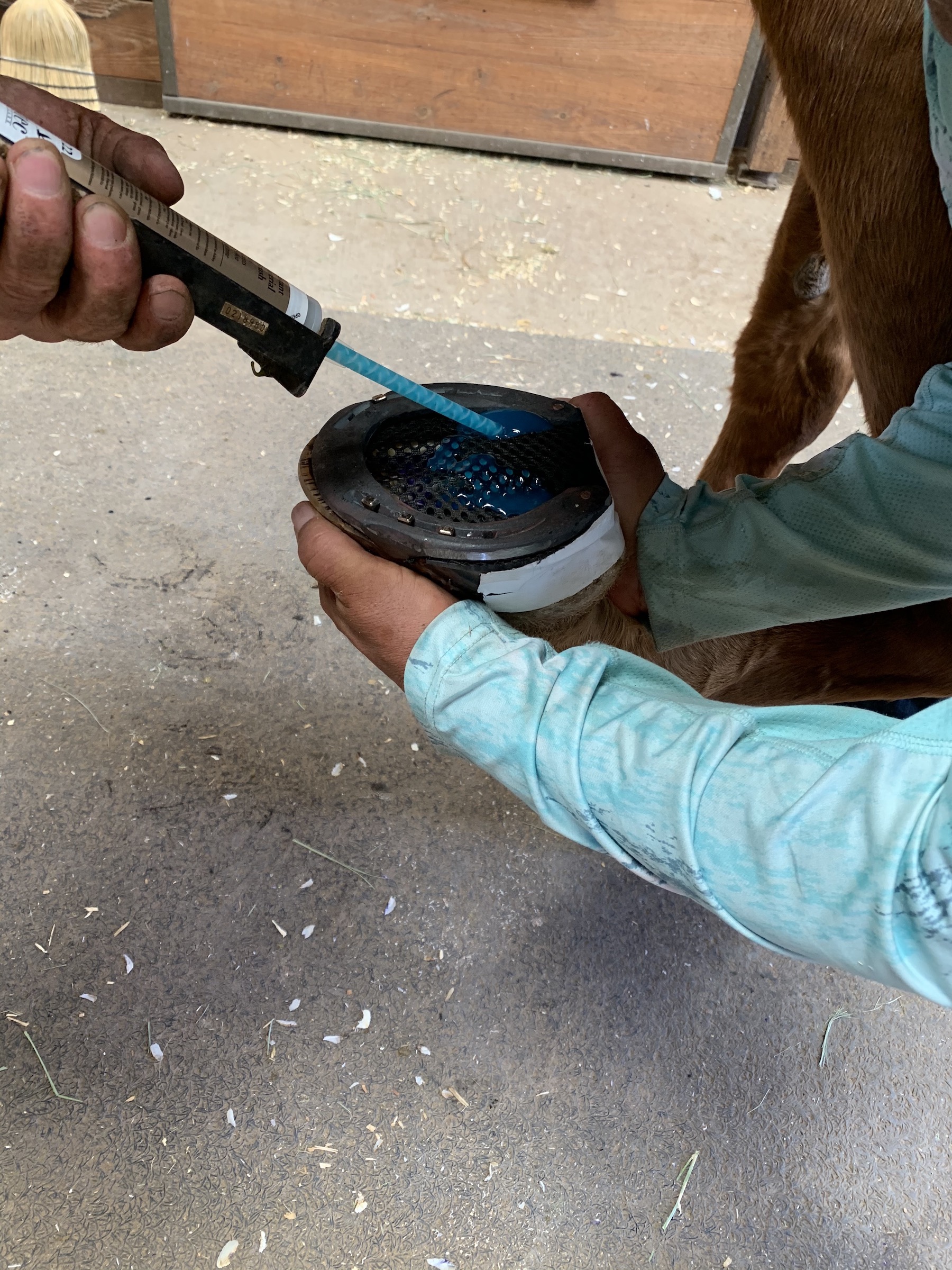
25 Sep 2020 Getting to the sole of the matter
A horse’s hoof and sole can withstand a lot of assault, but hooves aren’t invincible. Living in New Mexico has taught me to be careful where I ask my horse to step. Even with well-groomed arenas, turnout, and trails, I cannot avoid rocky terrain. A month ago, my horse came up lame in his right fore. Reason? A stone bruise.
Innocuous or not, a stone bruise on the sole of a horse’s foot can stop you in your tracks. Pain might only be part of the problem.
A stone bruise is a reddish or black mark on the hoof’s sole—bruise forms in bone or tissue. Blood collects, forming a mark or blister on the sole’s surface. Pressure from walking causes pain. Sensitive to the touch, the area can either heal itself or cause serious lameness. If unnoticed or left untreated, an abscess may form.
Rocky terrain, poor hoof trimming or shoeing, or inadequate health care can contribute to stone bruises. Larger breeds like my dear Irish Sport Horse may be more prone to bruising on foot. Why? Because large breeds tend to have flat feet!
Some stone bruises can be easy to treat. Others can require long-term treatment. With my trainer and vet’s help, we treated the bruised area with sugardine and padded the foot with a diaper securing the package with a sturdy boot. Adding more sugardine soaked diaper and adjusting the b00t became my morning r0utine.
After weeks of lunging and sending videos to my vet, my horse is sound. The boot in the field is off. Diapers are definitely off! I am back in the saddle just in time for winter.
In this email, I have embedded a video from Smart Pak about stone bruises. Enjoy!

